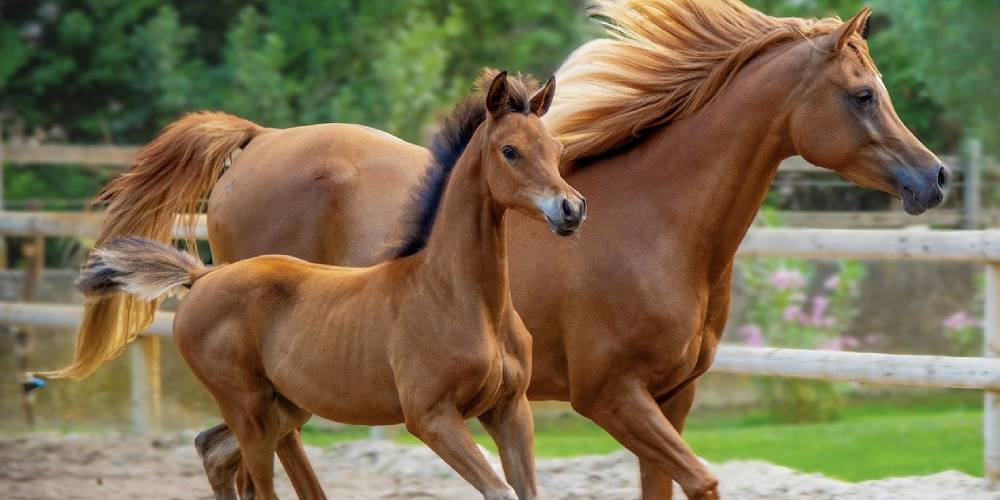Are you thinking of breeding your mare? It can be such an exciting decision to make! There are so many things to look forward to in breeding your mare such as choosing a suitable stallion, watching your mare go through the different stages of her pregnancy, and of course the miracle of birth and watching your new baby grow up!
Though breeding and raising foals is such a fun and rewarding experience, there are so many things that go into breeding horses that you may not realize! In this article, I will give you a step by step guide to the whole breeding process to give you the best understanding possible of what goes into breeding horses!
These are the steps I will be covering in this post:
- Consider Your Mare’s Health
- Ensure your Mare is Up-to-Date on all Vaccinations & Dewormer
- Schedule a BSE (Breeding Soundness Examination)
- Determine With your Vet Which Method of Breeding you are Looking to Use (Artificial Insemination, Embryo Transfer, or Live Cover Breeding)
- Learn Your Mares Fertility Cycle
- Choose a Stallion
- Schedule a Breeding Date
- Allow your Mare to Rest
- Schedule your Pregnancy Confirmation Appointment (14 days after breeding)
- Scheduling Appointments throughout Gestation
- Choose Where your Foal will be Delivered
- Learn the Signs of Labor
Consider Your Mare’s Health
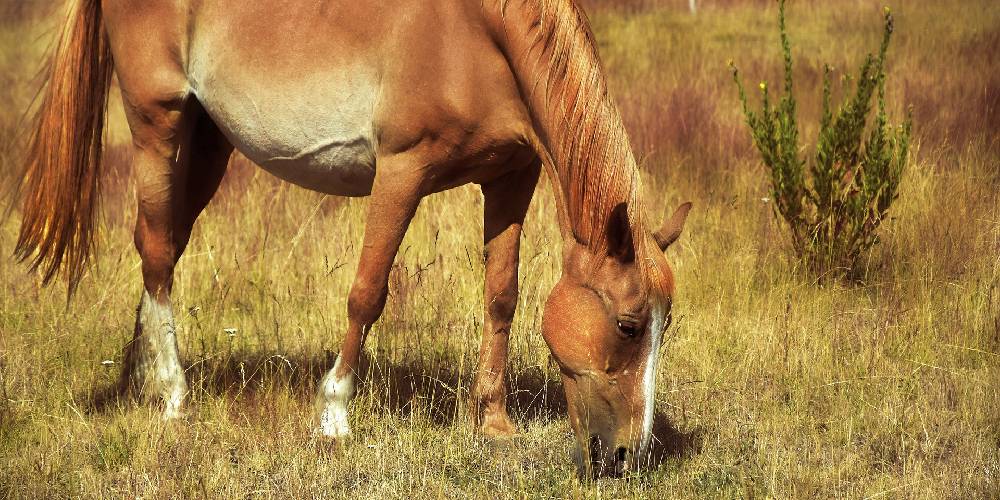
If you are thinking of breeding your mare, first you must consider your mare’s health.
Keep in mind that your mare will be pregnant & nursing for a MINIMUM of 14 months. Is this amount of time under the stress of pregnancy & nursing something your mare can comfortably handle? Another thing to consider is the performance aspect. If your horse is in training & showing, you must consider the fact that she won’t be able to compete for an extended amount of time.
Ask yourself the following questions when considering your mare’s health:
- How old is your mare? It is recommended that you don’t breed your mare under the age of 3 or over the age of 25. Also, mares that are over the age of 15 are at increased risk for birth complications & uterine artery rupture which can be fatal.
- Is your mare overweight?
- Is your mare underweight?
- Does your mare have any critical soundness issues?
- Are there any conformational or genetic issues that will affect your mare in pregnancy?
- Are there any conformational or genetic issues that could be passed to your future foal?
- Does your mare have any nutrient deficiencies?
Covering all bases before proceeding further down the breeding road is so important! If your mare doesn’t fit into these breeding mare health suggestions, maybe breeding your mare isn’t the best idea. Waiting until your horse fits into these breeding health suggestions could make a world of a difference in her ease of conception, health during pregnancy, health of the foal, and health after birth.
Ensure your Mare is Up-to-Date on all Vaccinations & Dewormer

Keeping your horse up to date on vaccinations and dewormer is so important even in day-to-day life. When you are bringing pregnancy and foaling into the mix, the importance of keeping her up-to-date is increased drastically!
Like in people, the immune system can take a hit when the horse is pregnant. Keeping your mare up-to-date on her vaccinations will help her have the best chance of staying healthy and happy throughout her whole pregnancy.
Building up her antibodies will also be super beneficial for after she gives birth too! Foals are born with pretty much no form of immunity/immune system and will get the mare’s antibodies through her colostrum in the first few feedings. Ensuring your mare has the necessary antibodies is crucial for both her’s and her baby’s health!
Baby horses often will eat their mother’s manure after they are born. It is believed it is to help them to kick-start the good bacterias in their GI tract. Imagine if your mare wasn’t up to date on dewormer and her baby got a mouthful of manure!!! That poor foal’s system would be riddled with worms!
Keep your mare up to date on her vaccines & dewormer for both her safety and her foal’s! Even if you are just starting to entertain the idea of breeding your mare, keeping her up to date will not only keep her healthy, but it will also help her future baby too!
Schedule a BSE (Breeding Soundness Examination)
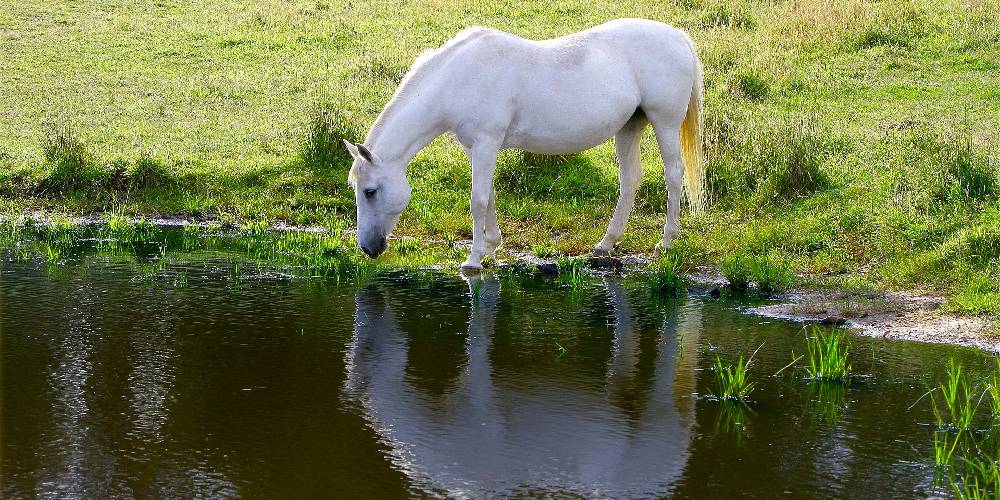
Scheduling a BSE is so important! It will not only save you time seeing you’ll know whether or not your mare can even be bred, but it will also give you the perfect opportunity to learn from your vet what to look for in a breeding mare.
Once you have made the decision that you do in fact want to breed your mare, the next thing you should do is schedule a BSE with your trusted veterinarian.
Some of the things your vet may look for/do in a BSE include:
- A full physical examination
- A confirmation of your mare’s age
- External examination of her reproductive tract
- Internal examination of her reproductive tract
- External examination of her mammary gland, teats, and udder
- Nutritional status (your vet may want to determine any nutrient deficiencies, if your horse needs additional supplementation, your horse’s body score, etc.)
- Hoof examination (your vet might want to look for structural abnormalities & overall hoof condition)
- Blood work
- Assessment of the mare’s estrous cycle to get an estimate of likelihood of conception
At the end of your BSE your veterinarian will have an answer for you as to whether or not your mare is a breeding candidate and why. Sometimes your mare may not be deemed a breeding candidate for reasons such as nutritional health, illness, body weight, and more which you often can resolve.
Passing a BSE is a crucial part in the breeding process. If you go ahead with breeding a mare even after she didn’t meet breeding criteria, you chance risking the health and even life of your mare and her future foal!
Determine With your Vet Which Method of Breeding you are Looking to Use
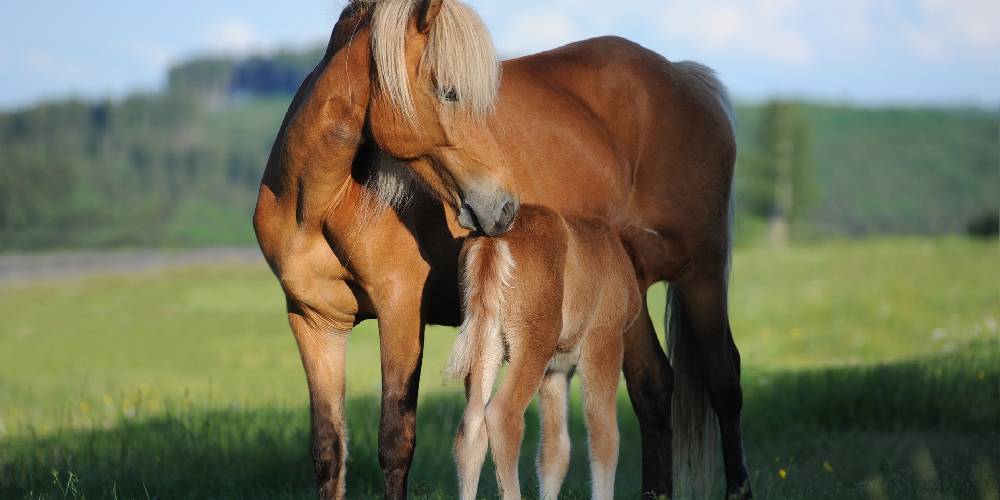
Based on the results of your mare’s BSE, your veterinarian may suggest you use one of three breeding methods. The three main breeding methods used include:
- Artificial Insemination
- Live Cover breeding
- Embryo Transfer (Surrogate Pregnancy)
Artificial Insemination (AI):
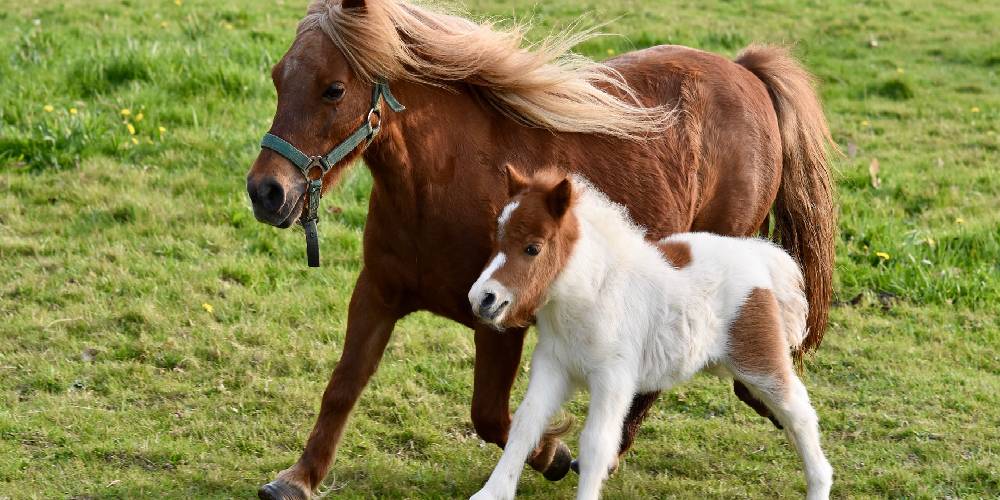
The most popular breeding method seen today is the Artificial Insemination method. Some pros and cons to this breeding method include:
| Pros | Cons |
| – Controlled – 60%-90% success rate – Much more stallion options – You don’t need to fly your mare to wherever the stallion is to breed to him – You can breed your mare to international stallions – It’s less stressful on the mare – There are far less recorded injuries to mares in the AI method than in traditional live cover breeding – One of the most popular and preferred methods of breeding around today – In some cases, there are options to breed to stallions that are already deceased – The available gene pool is far bigger in AI than in live cover breeding – AI is the most affordable breeding option for mares who struggle to take on the first try | – There is often much more preparation, veterinary involvement, and monitoring involved in AI compared to other methods – Not all stallion owners offer a ‘live foal guarantee’ – Some mares have a harder time conceiving with AI – Not all stallions have semen that can be stored chilled or frozen. Many doses are often required before a successful conception – Not all breed registries allow foals conceived through AI to be bred |
Artificial Insemination requires frozen, chilled, or fresh semen from a stallion. Before the insertion of the stallion’s semen, a mare must undergo a preparation process to reduce the chance of infection, contamination, etc.
Before your vet can inseminate your mare, she must undergo the following:
- A proper cleaning & sterilization of the mare’s vulva & perineal area. This will greatly reduce the chances of infection and internal contamination.
- Wrap the mare’s tail. Keeping the mare’s tail up and out of the way will help keep things clean and mess free. Using vet wrap or even a CLEAN polo wrap or standing bandage are all options to keeping her tail out of the way.
- Confirm if she is in fact ovulating/has ovulated. For the highest success rate, mares should be Artificially Inseminated within 6-8 hours of ovulation.
- Ensure all medical equipment has been properly sterilized
Once these steps have been followed, the veterinarian will then deposit the semen into your mare. Depending on the mare or if the semen is fresh, chilled, or frozen, the vet will deposit the semen in slightly different ways.
For Fresh semen, your vet will need to administer the semen within 8 hours of the semen’s collection. Your vet will typically insert a finger into the mare’s cervix, then use an insemination pipette to deposit the semen into the tip of the uterine horn.
For chilled semen, your vet will need administer the semen within 48 hours of the semen’s collection. Your vet will administer this semen the same way as they would administer fresh semen unless the mare is known to have difficulty conceiving, in which case a more ‘direct’ deposit of semen will be administered to increase the likelihood of conception.
For frozen semen, your vet will need to administer the semen within 12 hours of thawing. Once thawed, the semen should be checked under a microscope to check for sperm activity. To be deemed useable, the semen should have be at least 35% progressively motile. Frozen semen can be administered in the same way as fresh and chilled semen, but your veterinarian may prefer to deposit the semen as close as possible to your mare’s egg for the highest success rate possible. Frozen semen can be kept for years if stored properly. There are recorded successful pregnancies from semen that had been stored for 10+ years. Even though frozen semen has the advantage of being able to be stored and used years after its collection, some stallions don’t produce sperm that is able to withstand the freezing and storing process.
Live Cover Breeding aka. Natural Service
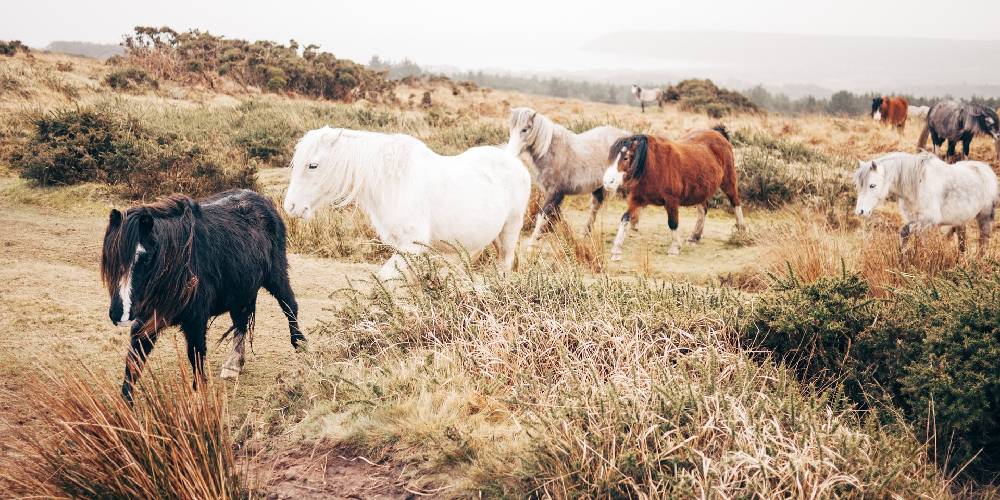
Live cover breeding is the traditional breeding method as well as the most cost-friendly and natural. These are some of the pros and cons to live cover breeding:
| Pros: | Cons: |
| – This is the most cost-friendly method of breeding if your mare conceives right away – Live Cover breeding is the most successful method of breeding with a 65%-98% success rate – All horse registration associations will allow foals to be registered when bred through live cover – Less veterinary involvement is required for live cover breedings – Less management of your mares estrous cycle is required – You have the option to either turn the mare and stallion out together to allow them to breed on their own, or breed them in-hand with handlers | – There is a significantly increased risk of injury for both stallions and mares in this breeding method – You have the risk of your mare rejecting the stallion even when she’s ovulating – Much more restraint, protective equipment, and sometimes sedation are required for this breeding method – You must consider the height of your mare and the stallion you are breeding to |
Live Cover breeding has 2 main methods. These methods are in-hand breeding and pasture breeding. Both of these methods of live cover breeding have their own risks and gains.
When doing a pasture live cover breeding, a stallion is usually turned out with a group of mares. This type of breeding is most common on ranches or large scale breeding farms where they have multiple broodmares who they are wanting to be bred to a specific stallion. In this breeding method, once the stallion is turned out to the mares, he then will have a certain amount of time out with these mares to breed with them. In this method, the breedings are much less controlled, the chances of injury to both mares and stallions are more likely, and it is difficult to determine an approximate due date as you have no idea when your mare truly ovulated.
In a pasture live cover breeding, you have the least amount of upfront costs as you don’t have as big of a need to pay for veterinarians, handlers, or additional stud fees if your mare doesn’t take right away. Though this is one of the cheapest methods of breeding, it does come with its risks which you must take into consideration before moving forward with this option.
In an in-hand live cover breeding, there are always handlers and veterinarians involved. This live cover breeding method is most common with higher-valued horses where live cover breedings are required to register offspring or preferred by the horse owner. There are usually 2-4 handlers on site to assist in this breeding; one or two people per horse.
In-hand live cover breedings are more costly than pasture live cover breedings, especially if your mare doesn’t take the first time around. Not only are you paying for the stud fee, but the number of hands needed on deck increases the cost quite a bit. When choosing which type of live cover breeding you’d like to go with, keep in mind that in-hand breedings are usually safer, more controlled, and result in less mare/stallion injuries than pasture breeding.
As with AI, Live cover breedings (when done in-hand) will require the mare to be properly cleaned, prepped, her tail wrapped, protective gear on, and sometimes sedated. This will ensure the mare cannot injure the stallion as easily during the breeding process, and the stallion also cannot injure the mare as easily.
Some of the protective gear used in these live cover breedings include:
- breeding hobbles
- tail wrap (vet wrap, polo wrap, or standing bandage work great!)
- kick boots
- neck guard
Live cover breedings are the most successful method of breeding used. Not only is it the most natural, but with mares who have a harder time conceiving, the 65%-98% success rate may not be a bad thing to look at!
Embryo Transfer (ET) aka. Surrogate Pregnancy
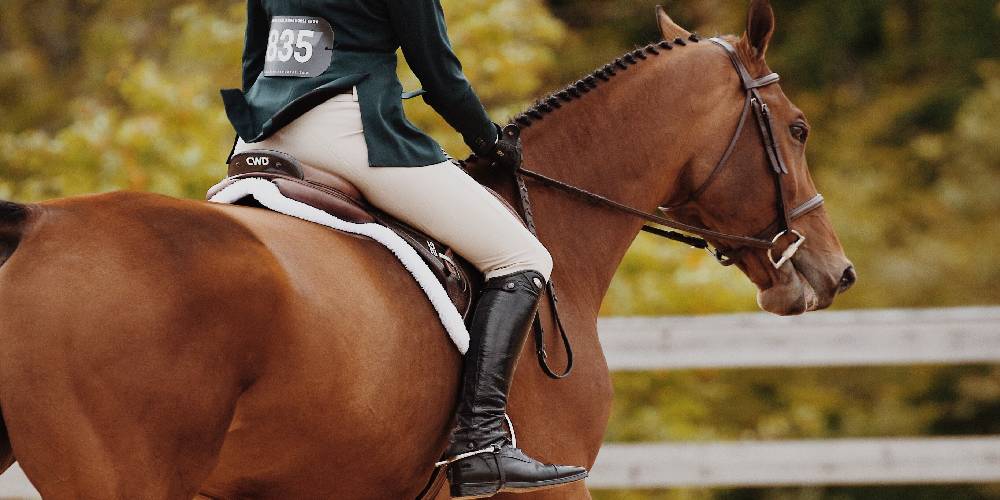
The next method of breeding is known as an Embryo Transfer or, the more lax term, surrogate pregnancy. These are some of the pros and cons to the Embryo Transfer breeding method:
| Pros: | Cons: |
| – You can have a foal from your mare without having to remove her from competition and training – You often can get multiple foals from one mare in the same breeding season – You can breed older mares with little side effects – This method of breeding has a 50%-70% success rate – You can sometimes breed mares that don’t pass their BSE as they don’t have to carry their own foals – If your surrogate mare is in another city, state/province, or country, sometimes you have the option to chill or freeze the embryo for transfer | – Not only do you need your mare and a stallion, but you also need a recipient mare to carry the foal to term – This method is usually more expensive – ET is the least successful breeding method – Not all breed registries allow foals conceived through this breeding method to be registered |
When it comes to ET, your mare will need to go through the steps of AI or live cover in order to have her egg fertilized to create an embryo. If ET/Surrogate pregnancy is the route best suited for you and your horse, please make sure you read through the AI and Live Cover portions as well so you are able to make the most educated decision on which path to ET you would like to take.
When doing an ET/Surrogate pregnancy, there are always 3 horses involved. These 3 horses are your mare (donor mare), a surrogate mare (recipient mare), and of course the breeding stallion. The process for ET is a tedious one. Not only will you need to coordinate 3 horses, but the donor mare and recipient mare MUST be in sync with each other’s cycles in order for her to receive and keep the embryo. If the cycles are out of sync, the chances of the recipient mare keeping the embryo will be greatly reduced.
In an ET breeding, the donor mare must first be bred to the stallion in an AI or Live Cover breeding. Once fertilization takes place and the pregnancy is confirmed, the embryo must then be flushed from the donor mare’s uterus.
The flushing of the embryo from the donor mares uterus is a painless process. It involves flushing her uterus with a special fluid. Once flushed, the fluid is then drained through a special embryo filter. The embryo is then isolated and implanted into the uterus of the recipient mare.
Before putting your mare back into work, ask your vet how long of a break he/she thinks your mare should take after the whole ET process. Donor mares can usually return to work around 3 days after her uterus flushing, but every mare is different and some may need more time off than others.
16 days after the embryo implantation, the embryo will become ‘fixed’ to the recipient mares uterus. It is at this point where the recipient/surrogate mare will receive an ultrasound from a veterinarian to confirm the pregnancy.
Based on the above information and other research, you and your veterinarian can decide between the two of you as to which of the above breeding methods best fits you, your horse, and your goals with this new foal!
Learn Your Mares Fertility Cycle
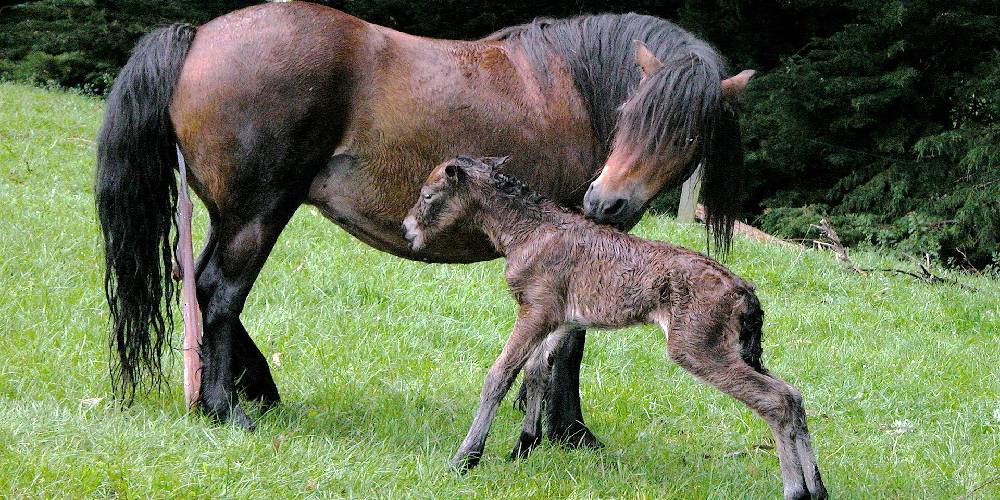
Learning your mares fertility cycle is crucial when timing a breeding. If you are unsure as to when your mare is ovulating, there is a slim chance she’d even conceive when you breed her as you need to catch her ovulation window just right.
In the pasture method of live cover breeding where mares are turned out for weeks or even months at a time with a stallion, knowing your mares cycle isn’t as crucial seeing she’ll likely allow the stallion to mount her when she is ovulating. In ET, AI, and in-hand live cover breedings, knowing exactly when your mare is ovulating is a must for the breeding to be a success.
In your mare’s BSE, your veterinarian will likely be able to determine at what stage in her cycle she is at. Based on this information, you should be able to get an idea of when your mare is ovulating and when you are able to breed her.
Before your vet is able to perform an AI procedure, they must first confirm when/if she ovulated and administer the semen accordingly.
Some mares show specific signs when they are going into heat while others aren’t as obvious about their cycle. Some examples of behavioral indicators that might tell you your mare is going to cycle include:
- Frequent urination
- Irritable, aggressive, or unpredictable in nature
- Raising their tails
- “Winking” (winking is when a mare will open and close her vulvar lips. Often mares will ‘leak’ as well)
- Squealing
- Showing heightened interest in geldings and stallions
- Squatting or pushing their hind into things
- Standing with their hind legs further apart, and rounded hindquarters
If your mare is showing symptoms of being in heat, scheduling an appointment with your vet, coordinating with your stallion owner/breeder, and confirming ovulation is so important. Mares most commonly will ovulate in the last 24-48 hours of their heat cycle, so catching this window while it is open is crucial if you want to breed her during that specific cycle.
Choose a Stallion
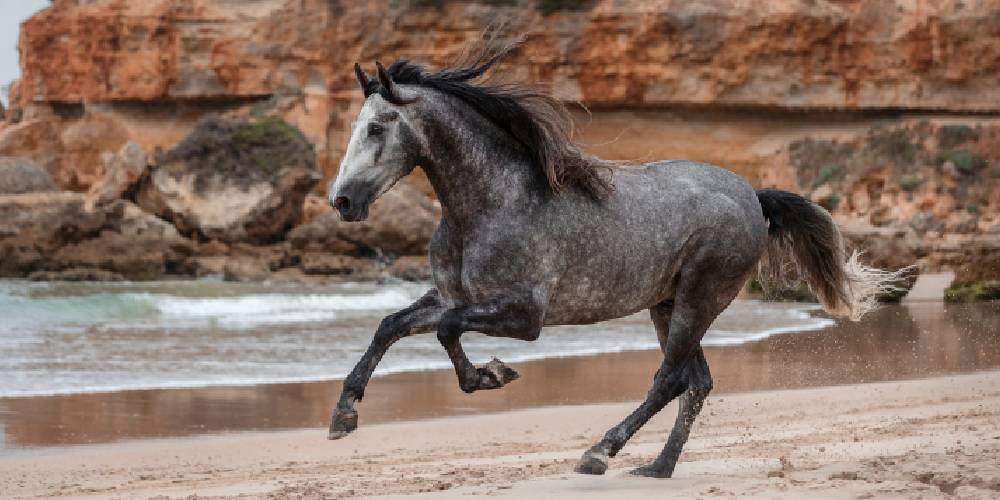
Choosing a stallion is by far one of the most exciting parts of the whole breeding process. Deciding who you want to breed your mare to and imagining what their baby will look like is just so thrilling!
Though choosing a stallion can be so so fun, making sure you are choosing the correct stallion is crucial. It can be so easy to get caught up in the big fun flashy horses, but remember to remind yourself of what you want in a foal, what your goals for that foal are, what sort of temperament you want your foal to have, etc.
When looking for a suitable stallion, ask yourself these questions:
- Are you wanting to breed your mare to a specific breed of horse?
- Are you concerned about the height of your future foal?
- What sort of temperament are you hoping your future foal will have?
- Does the stallion you’re looking at offer the type of breeding you have chosen? (Artificial insemination/live cover)
- Has the stallion you are looking at had genetic testing done?
- What discipline are you hoping to do with your future foal?
- Are you hoping to register your future foal with a breed registry? If so, does that registry have any specific breeding requirements (Ex. Jockey Club requires Thoroughbreds to be bred through live cover to be registered)
- Are there physical faults in your mare or the stallion that you are hoping to avoid in this breeding?
- Are coat colors/patterns/markings a deciding factor in this breeding?
- Does the stallion you are looking at have good conformation?
- Is horse show history relevant in this breeding?
- Does this stallion have other offspring? Do those babies carry characteristics you want in your foal?
- How old is this stallion? (the older the stallion, the lower the fertility)
- Does the breeder offer a live-foal guarantee in the event your mare doesn’t conceive with the first round of semen?
- Is visiting the stallion in person an option?
- Is there a breeding slot available to you in this breeding season?
- Is the stallion sound? If not, what caused his lameness?
- Trainability! How did the stallion perform in training? How were his other foals in training?
- Does this stallion complement your mare?
If it is easy for you to be blinded by a stallions markings, coat color, pedigree, etc. Stop and ask yourself this question: If this stallion was brown, had no markings, etc. would you still want to breed to that stallion? Sometimes, asking yourself this question will bring certain conformational issues, soundness issues, disposition or temperamental issues, and more to your attention that you were blatantly ignoring because the stud had one great feature that was blinding you to these other things.
Once you have chosen a stallion, and you know your mare’s approximate ovulation date, getting in contact with the stallion’s owner/breeder as soon as possible needs to be your priority.
Depending on when the stallion has an opening in this breeding season for live cover, or has an available collection for your mare, you will then need to coordinate with your vet about a breeding/insemination date. Keep in mind that having a couple different stallions you are open to breeding with might not be a bad idea in case the stallion you have chosen doesn’t have a breeding opening for you.
Schedule a Breeding Date
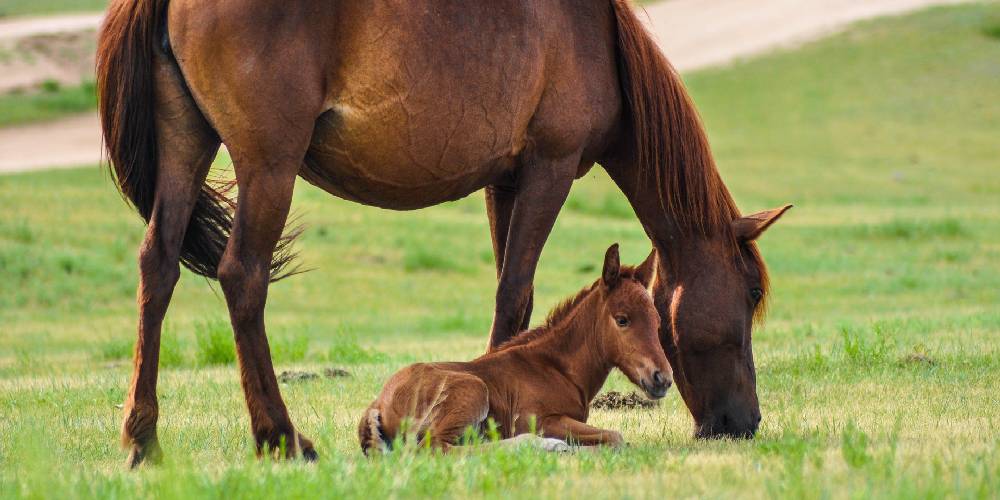
Now that your mare has passed her BSE, you have chosen a breeding method, you have chosen a stallion, and you have coordinated with the breeder regarding semen shipments/possible live cover dates, it is now time to schedule the official breeding date.
If your mare is doing an in-hand live cover breeding, ET, or AI, your scheduled breeding date MUST be in correlation with your mare’s suspected ovulation date.
The ONLY breedings where there won’t be as big of a hurry regarding shipping dates, ovulation times, etc. are pasture live cover breeding (as your mare will breed with the stallion on her own when she is in the correct stage of her cycle) and AI using frozen semen (as frozen semen will keep almost indefinitely when stored properly). All other methods of breeding will require precise coordination with stallion representatives, veterinarians, handlers, etc. on a timely schedule in relation to your mare’s estrous cycle.
Coordinating everything definitely can be a bit overwhelming, but when you have all your details decided and you have a breeder, a vet, or someone else with breeding experience there to assist you, you’ll find that everything will fall into place!
Before your breeding appointment, be sure that your mare is properly prepared! Be sure to be prepared with the following:
- Make sure she is hydrated and that she had something to eat prior to the appointment
- Have your mare’s tail bandaged so it is out of the way
- Sometimes bathing your horse ahead of time will help to reduce chance of contamination from dirt, dust, dander, etc.
- I like my horses to wear standing wraps and standing bandages when I transport them. If your mare needs to be put in breeding stocks for her AI appointment, sometimes offering her extra leg protection isn’t a bad idea.
Once your mare is inseminated/bred at her breeding appointment, your vet will ask you to let your mare rest for a certain amount of time and then get her in the schedule for a pregnancy confirmation appointment.
Allow your Mare to Rest
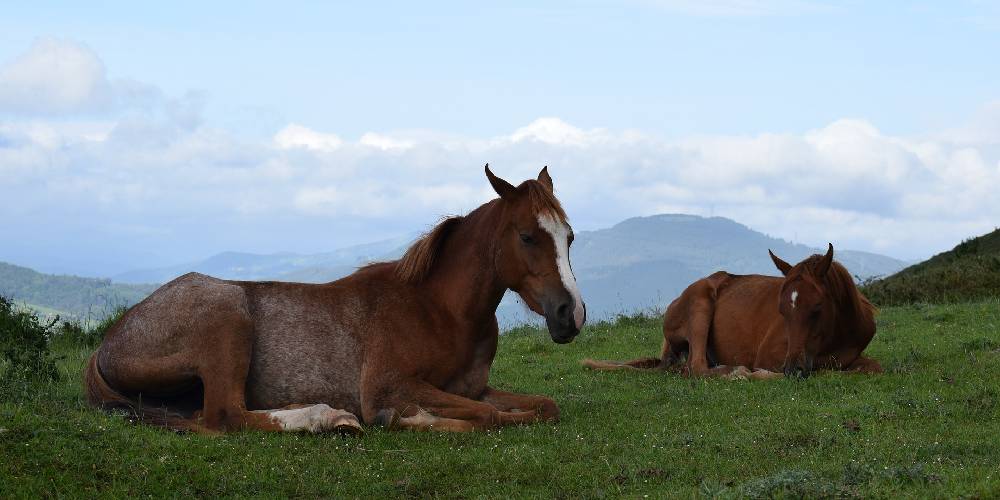
After breeding your mare, your vet will ask that you allow your mare to rest for a certain amount of time. This is not only will keep her stress levels down, but it will also help increase the chances that the fertilized embryo will successfully implant in your mare’s uterus.
The suggested amount of rest between breeding your mare and when she can return to work again is 45 days (about 6 weeks). At this point, your mare’s pregnancy will have been confirmed, the embryo will have implanted, and the risk of initial pregnancy loss has dropped.
Now that your mare is pregnant, please keep her pregnancy in mind when returning back to work. Though some people will say that your mare can go right back to what she was doing before being bred, I would suggest that you take some precautions so as not to injure your mare or her developing baby.
Schedule your Pregnancy Confirmation Appointment
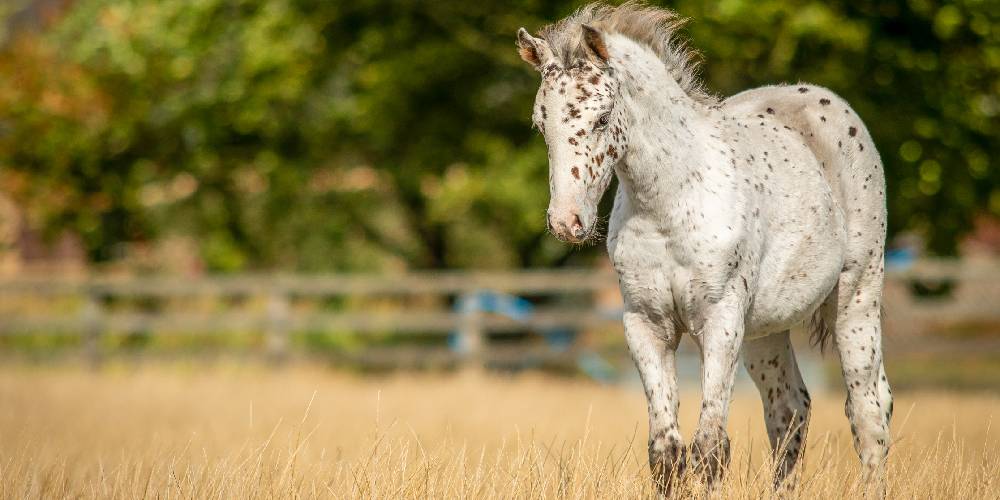
14 days after breeding, your mare will be due for her pregnancy confirmation appointment. This appointment will be performed by a veterinarian and will determine if your mare is pregnant or not, tell you if your mare is having twins, and if she is not pregnant you will get an idea of when she can be bred again.
The day 14 pregnancy confirmation appointment will typically involve a rectal palpation and ultrasound. In the ultrasound, your vet will be able to see your mare’s foal and if there are potentially 2 babies. In the rectal palpation, your vet will be able to feel the uterus and ensure that things feel normal for her stage of pregnancy.
Scheduling Appointments throughout Gestation
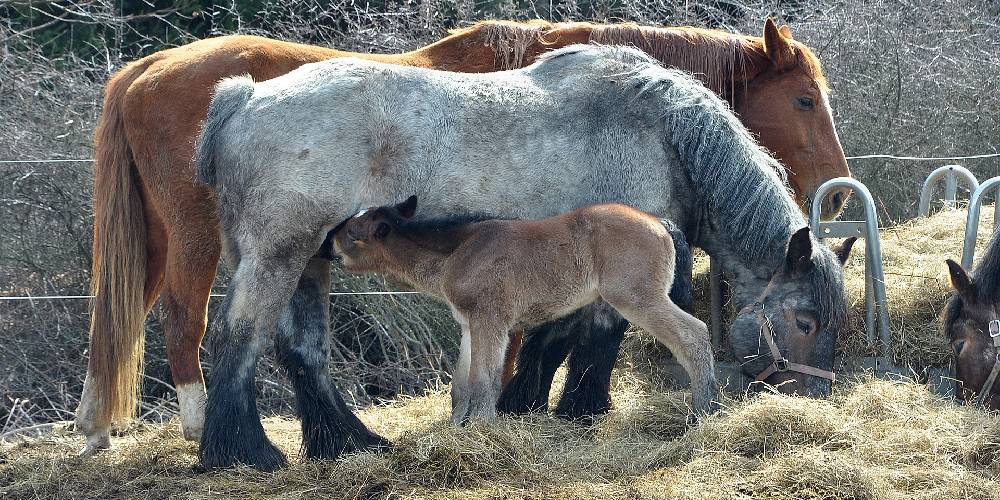
Just like in human pregnancy, mares have a number of recommended appointments performed by a veterinarian to ensure that her pregnancy is moving along smoothly, that both mama and baby are healthy and happy, and that there aren’t any complications.
The typical appointments performed through your mares pregnancy include:
- The 14 day pregnancy confirmation appointment (that I discussed above) to check for an embryo to confirm the pregnancy and for any possible twins
- The 30 day appointment to check for a heartbeat, normal fetal development, and double check for twins
- The 45-60 day appointment to listen to the fetal heartbeat and check for viability & health
- The 60-90 day appointment to check the placenta, potentially sex the foal, and deworm the mare
- The 180 day “fall check” to check the status of the foal and mare and ensure the pregnancy is going well
These are the suggested exams your vet may recommend you do for your mare to make sure she and her baby are doing well during the gestation period.
In the event you are concerned for the wellbeing of your mare or the foal for any reason, it doesn’t hurt to schedule additional appointments to make sure the pregnancy is going well and that both mama and baby are doing fine.
If any of these situations pertain to your mare, call a vet for a mare & fetal examination as soon as you can:
- Your mare gets sick
- Your mare is injured
- Your mare was involved in an accident
- Your mare is showing signs of going into labor before 320 days of pregnancy
- Your mare is starting to drip milk prior to 320 days of pregnancy
- Your mare’s udder is not beginning to fill with colostrum within a week of her due date
Choose Where Your Foal will be Delivered
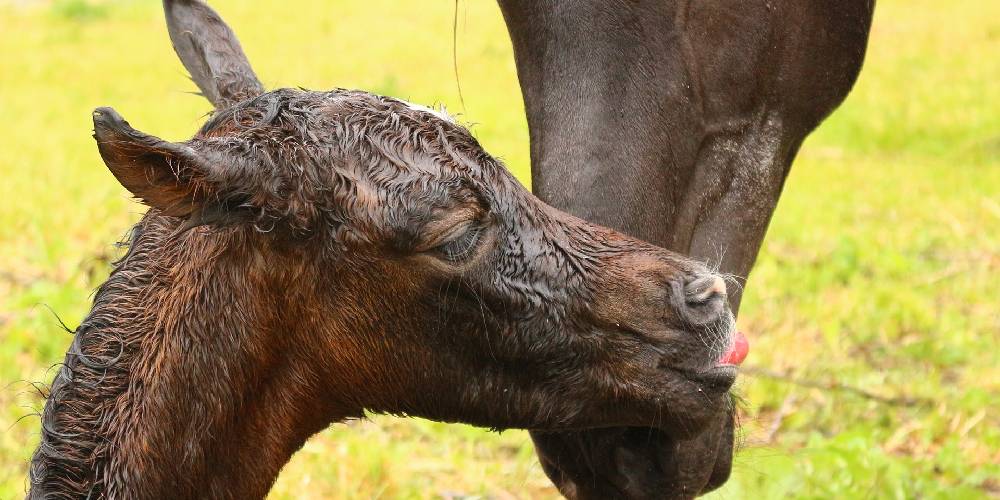
When you learn that your mare is officially pregnant, determine then where exactly you would like her to have her baby. If you board your horse, be sure to check to see what the foaling policy is at your barn. Some boarding facilities do not allow foaling, so determining where you will bring your mare for foaling is a must.
There are a few options as to where you can have your foal born. Here are a few examples:
- A foaling facility
- An Equine Hospital
- In a safe, clean birthing pasture
- In a large, clean, properly bedded stall
Wherever you decide to have your foal born, be sure you are confident and comfortable with the decision you have made. If you choose to have your mare sent to a foaling facility or equine hospital, going to check out the facility is a great idea to get a feel for where your mare will be and if you are comfortable with her staying there.
It is recommended that if you are going to have your mare deliver at a different location than where you have her now, that you bring her to the new place 3-6 weeks before her expected due date. This way your mare will have time to adjust, relax, and even get some new antibodies from the new environment to transfer over to her newborn foal.
Learn the Signs of Labor
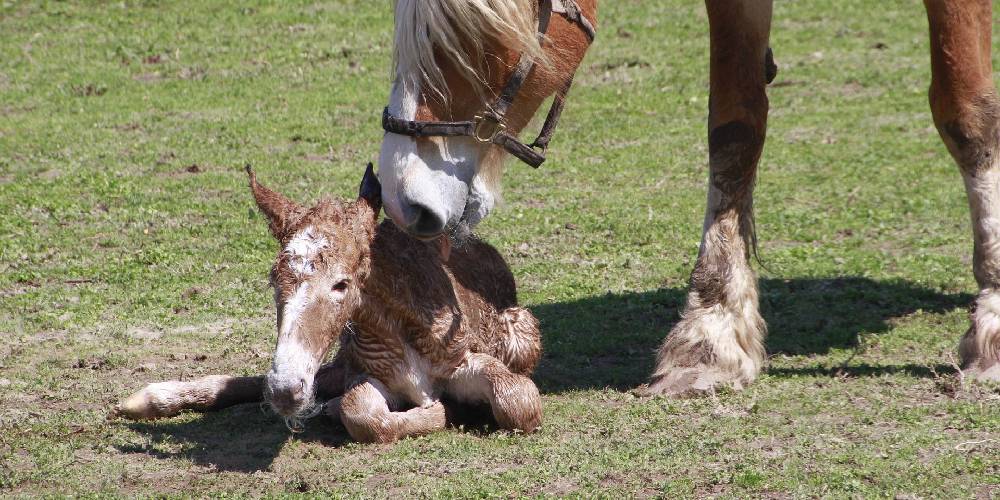
Knowing the signs of labor is crucial. Knowing these signs will give you the greatest idea of when to expect your newborn foal. Depending on the mare, the gestation period will last anywhere from 320-380 days with colts having the trend of being born later, and fillies born sooner.
These are signs that your foal will likely be born soon:
- Milk will fill her teats typically 4-6 days before birth
- A day or two before birth, a yellow-ish crust will form on her teats. This is called ‘waxing’
- The area around the mare’s vulva will soften and relax
- The mare’s vulva will relax and elongate
- The mare’s croup will seem to sink down on either side of her tail
- Her tail will be significantly more relaxed than normal
- Your mare will be restless and likely pace, show colic symptoms, or lie down and get up repeatedly
- Profuse sweating even in cool weather is also an indicator of labor
- The mare may want to leave the herd, separate herself from other horses, and be by herself
- Excessive defecation can be a sign that labor will begin within the next few hours
Though these are some of the tell-tale signs that your mare is going into labor, your mare, especially if she’s a first-time-mama may only show a few or even none of these signs.
When you start to get towards the 320 day mark in your mare’s pregnancy, carefully watch her for signs she may go into labor soon. Mares prefer to give birth at night as it is the most private time of day and they often feel safer, so don’t be surprised if you find a happy little surprise in the morning!
During these last few weeks or days of your mare’s pregnancy, making sure the foaling stall or birth pasture are clean and ready for mama and newborn baby is crucial to keep mama and baby clean, comfortable, and healthy in the days and weeks after delivery.
If you are going to have your mare deliver her baby in a stall, I suggest reviewing my article all about how to prepare your foaling stall. This article should help you to get your mare’s stall clean and ready for the big day and answer all your questions regarding the save cleaning solutions, proper bedding, etc.

